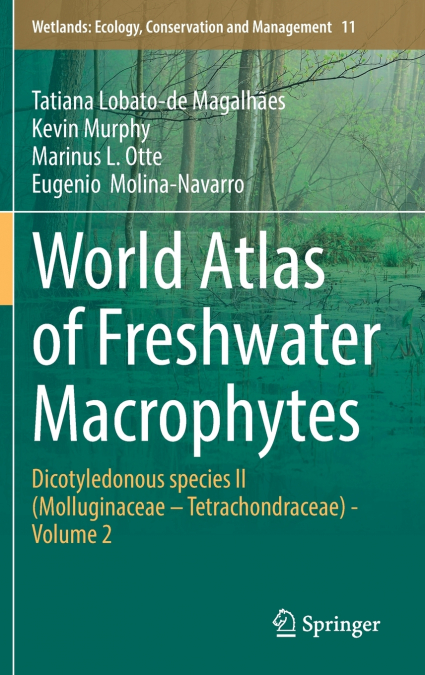
Kevin Murphy / Marinus L. Otte / Tatiana Lobato-de Magalhães
This book is the second volume of a compendium of the global distribution of some 3500 aquatic macrophyte species occurring in inland freshwater and brackish waterbodies worldwide, highlighting aspects of their ecology including endemism, world rarity, ecozone/ macroregional occurrence, ploidy state, species age, uses, and endangered status. This book provides a novel resource on the distribution and ecology of macrophytes around the world. The Atlas fills a gap in scientific knowledge of the global ecology of an important group of aquatic plants. It highlights the expansion of invasive species and describes hotspots of endemism and rarity for freshwater macrophytes across the planet. The data included in this book range from karyological to biogeographical studies on macrophytes, within a general theme of understanding the environmental factors that drive the biodiversity, ecology, landscape genetics, and conservation of aquatic plants in freshwater ecosystems. The second volume of the World Atlas of Freshwater Macrophytes: Dicotyledonous species II (Molluginaceae - Tetrachondraceae) covers 21 botanical families and 824 species of aquatic macrophytes. The authors, based in Mexico, Scotland, Spain, and the USA are members of an informal international research network, set up in 2017 by retired aquatic botanist Kevin Murphy, which is dedicated to advancing macroecological knowledge of freshwater macrophytes in the inland freshwater and brackish waterbodies of worldwide wetland ecosystems. The topic of this book is relevant not only to scholars and academics but also to practitioners in wetland management, decision makers, and aquatic plant hobbyists.